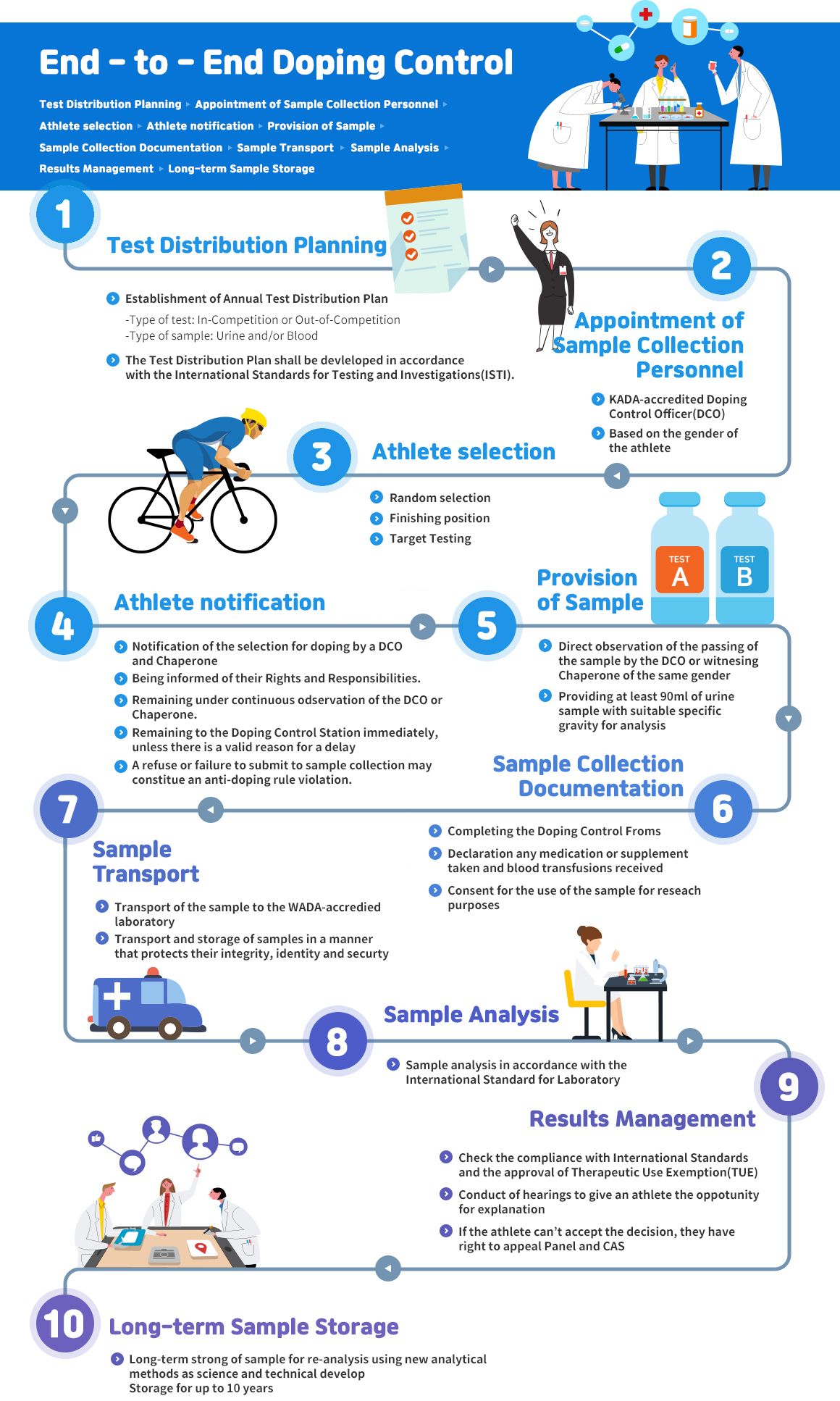KADA - Korea Anti Doping Agency

- End-to-End Doping Control
- End-to-End Doping Control
- Test Distribution Planning - Appointment of Sample Collection Personnel - Athlete selection - Athlete notification - Provision of Sample - Sample Collection Documentation - Sample transport - Sample Analysis - Results management - Long-term Sample Storage
- 1. Test Distribution Planning
- Establishment of Annual Test Distribution Plan
- Type of test: In-Competition or Out-of-Competition
- Type of sample: Urine and/or Blood
- The Test Distribution Plan shall be developed in accordance with the International Standards for Testing and Investigations(ISTI).
- 2. Appointment of Sample Collection Personnel
- KADA-accredited Doping Control Officer(DCO)
- Based on the gender of the athlete
- 3. Athlete selection
- random selection
- Finishing position
- target Testing
- 4. Athlete notification
- Notification of the selection for doping by a DCO and Chaperone
- Being informed of their Rights and Responsibilities.
- Remaining under continuous odservation of the DCO or Chaperone.
- Remaining to the Doping Control Station immediately, unless there is valid reason for a delay
- A refuse of failure to submit to sample collection may constitue an anti-doping rule violation
- 5. Provision of Sample
- Direct observation of the passing of the sample by the DCO or witnesing Chaperone of the same gender
- Providing at least 90ml of urine sample with suitable specific gravity for analysis
- 6. Sample Collection Documentation
- Completing the Doping Control Froms
- Declaration any medication or supplement taken and blood transfusions received
- Consent for the use of the sample for research purposes
- 7. sample transport
- Transport of the sample to the WADA-accredied laboratory
- Transport and storage of samples in a manner that protects their integrity, identity and securty
- 8. sample analysis
- Sample analysis on accordance with the International Standard for Laboratury
- 9. result management
- Check the compliance with International Standards and the approval of Therapeutic Use Exemption(TUE)
- Conduct of hearings to give an athlete the oppotunity for explanation
- If the athlete can't accept the decision, they have right to appeal Panel and CAS
- long-term sample storage
- Long-term strong of sample for re-analysis using new analytical methods as science and technical develop Storage for up to 10 years
- End-to-End Doping Control